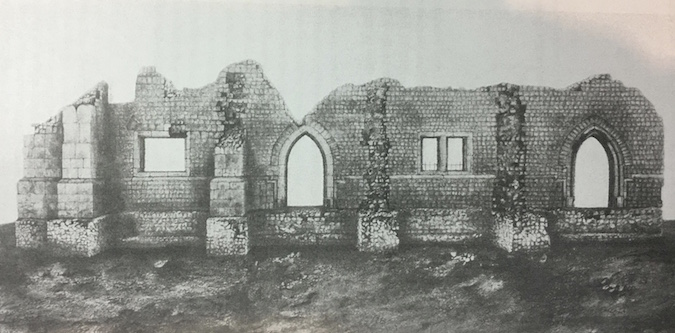The recently completed £1 billion European headquarters of Goldman Sachs in Farringdon Street is situated on the exact footprint of the first medieval Blackfriars monastery. It was built for mendicant Dominican friars in 1224. They moved 50 years later to their main home near today’s Blackfriars station, a few hundred yards down the same street on the opposite side of the River Fleet.
But the apparent contrast between God and Mammon is not as clear cut as it may seem. Goldman Sachs turned out to be mendicants of a kind on an industrial scale when they received $10 billion in emergency support from the US Treasury during the 2008 financial crisis. Nor were the monks model mendicants. Piers Plowman, the 14th century poet, accused them of debauchery and luxurious living on a grand scale.
Nothing remains of the original monastery and there are only scattered remnants of the second one, which occupied a vast eight-acre walled estate stretching to the Thames from Ludgate Hill. Fragments found in dozens of archaeological digs were destroyed or left buried under new buildings.

The only bits of the original building still visible form part of a wall along Ireland Lane (see main picture) and the remains of a window preserved behind glass in one of the office blocks, which you need permission to see. Otherwise, apart from a window arch in the garden of the Selsdon Park hotel and a column at St Dominic’s church up in Haverstock Hill, nothing is left of this historic 13th century monastery, which once had close links with the Crown.
Its great hall was once used to host meetings of parliament, which was convenient for Henry VII whose main London palace, Bridewell, was a few yards away on the other side of the Fleet. Shakespeare’s play Henry VIII was once staged in the very hall where that monarch’s divorce petition against Catherine of Aragon had been debated decades earlier. It included some of the actual words used during the original trial.
From 1536, after the dissolution of the monasteries, Blackfriars became a highly desirable residential neighbourhood where aristocrats and cronies of the monarch, as well as the likes of Ben Jonson, lived in relative tranquility until that man Shakespeare arrived – of which more next week.
All previous instalments of Vic Keegan’s Lost London can be found here.
On London depends on donations from readers to keep going and growing and is now actively seeking funding from suitable organisations. Read more about that here.


Shakespeare’s play Henry VIII was once staged in the very hall where that monarch’s divorce petition against Catherine of Aragon had been debated decades earlier.
That is *amazing*. It is obvious that in a living cities, huge chunks of history will simply disappear over time but that makes me want to touch the ground at the site. Extraordinary.
So often, around the old city, I get most exercised about the loss of working class buildings, with the assumption being that all the ‘posh’ old buildings somehow remain, so it’s interesting to see which ones were demolished and why. I can remember the old houses on Little Britain, which were demolished for…. the Lloyds building? I was very young, and can’t remember the details but I do remember a magically Dickensian, extremely ancient looking row of old buildings which was obviously deemed too dull to keep. Grrrr. It doesn’t even talk about the destruction in the Wikipedia page, which makes me very sad.
These are great pieces!